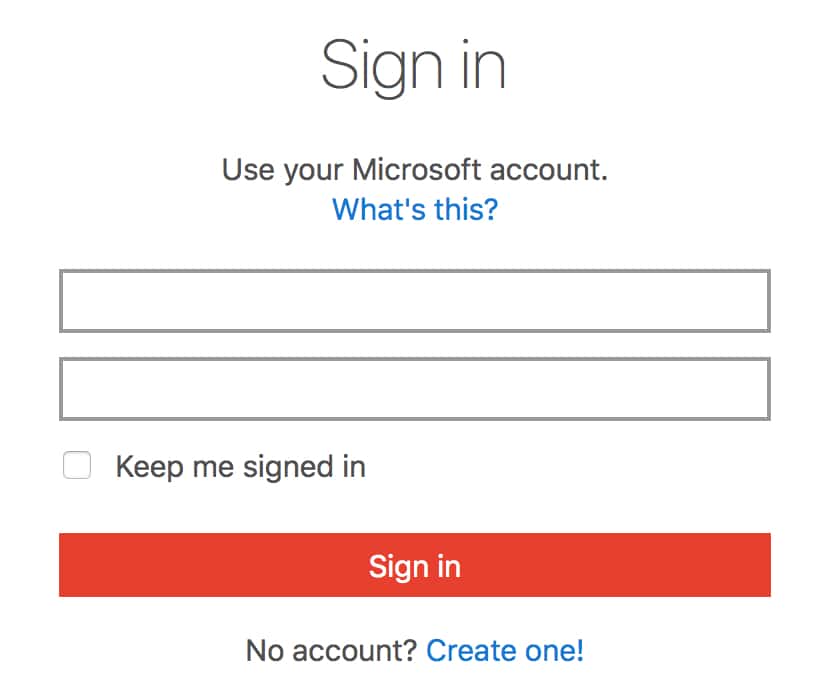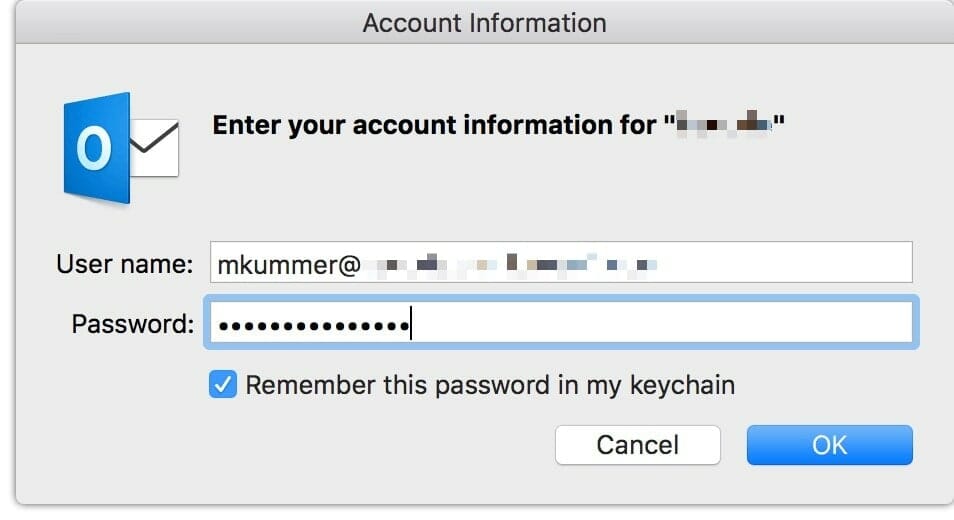I am really frustrated by this issue and other Office 2016 issues. I've given up and moved the user back to Office 2010. I too was experiencing the Excel white screen, blanking out the data/contents in any profile on the computer not just the primary users. This issue is hard to explain but Excel opens to a white screen without grid lines. Yes, you can install and use Office 2016 for Mac and Office for Mac 2011 at the same time. However, we recommend that you uninstall Office for Mac 2011 before you install the new version just to prevent any confusion. To uninstall Office for Mac 2011, follow the steps in Uninstall Office 2011 for Mac. How do I pin the Office app icons to the dock? Open any Microsoft Office 2016 application – this can be Word, Excel, PowerPoint, OneNote, Access, Publisher and obviously Outlook. From the Navigation bar, select Account. Sign in to Microsoft by providing your login credentials (similar to the ones you might use for Outlook.com or OneDrive). Select a background and office theme. Start your Mac and immediately, press and hold the Shift key. Apple logo will appear (do not release the Shift key yet) Then you will see the login screen (now you may release the Shift key) and login your Mac. Now you are in safe mode. Does flickering still happens? If flickering does not happen, restart your Mac regularly (without pressing any keys).
-->Original KB number: 3188434
Symptoms
You start Microsoft Outlook 2016, and it hangs at the Processing stage on the startup screen. Outlook never fully starts.
Resolution
This issue was fixed in the following updates:
Office 2016 For Mac Login White Screen Mac
- Office build 16.0.7369.2015 for Office 2016 Click-to-Run editions.
- March 2017 update for Microsoft Installer (.msi)-based edition of Office 2016.
Workaround Method 1 - Manually configure Outlook 2016 to always run maximized
Exit Outlook 2016.
Determine which icon you use to start Outlook, and access the Properties for that shortcut:
Icon on the Desktop
- Right-click the Outlook icon on the Desktop, and then select Properties.
Icon pinned to the taskbar
- Right-click the Outlook icon on the taskbar, right-click Outlook 2016, and then select Properties.
Icon pinned to the Start menu
Right-click the Outlook tile pinned to the Start menu, point to More, and then select Open file location.
Right-click Outlook 2016 in the File Explorer window that opens, and then select Properties.
In the Outlook 2016 Properties dialog box, select Maximized for Run.
Select OK.
Workaround Method 2 - Use Group Policy to configure Outlook 2016 to always run maximized
Start the Group Policy Management Console.
Note
Because you may be applying the policy setting to an organizational unit and not to the whole domain, the steps may also vary in this aspect of applying a policy setting. Therefore, check your Windows documentation for more information.
In the Group Policy Management Console, under User Configuration, expand Preferences, expand Windows Settings, and then select Shortcuts.
Create a new shortcut with the following properties:
Name: Outlook 2016
Location: All Users Desktop
Target path: <path of Outlook.exe>
Arguments: /recycle
Start in: <path of Outlook.exe>
Run: Maximized
Icon file path: <path of Outlook.exe>Note
The path of Outlook.exe may vary, depending on the Office installation type and bitness of Windows and Office, as follows.
Office installation type Bitness of Windows and Office Default path of Office Click-to-Run Same C:Program FilesMicrosoft OfficerootOffice16| Click-to-Run Different C:Program Files (x86)Microsoft OfficerootOffice16| MSI Same C:Program FilesMicrosoft OfficeOffice16| MSI Different C:Programs Files (x86)Microsoft OfficeOffice16| Same Bitness: Office 32-bit running on Windows 32-bit or Office 64-bit running on Windows 64-bit
Different Bitness: Office 32-bit running on Windows 64-bitCopy the shortcut that you created, and then paste it to duplicate it.
Double-click the shortcut that you pasted, and then change the Location to All Users Start Menu. Select OK.
Copy the shortcut that you created, and then paste it to duplicate it.
Double-click the shortcut that you pasted, and then change the Location to All Users Programs. Select OK.
Note
If a user has an Outlook 2016 shortcut pinned to their taskbar, this will not replace it. The user can unpin the shortcut from their taskbar and then re-pin it from one of the other locations after the policy is in effect.


Workaround Method 3 - Manually delete the Outlook Frame value from the registry
Important
Follow the steps in this section carefully. Serious problems might occur if you modify the registry incorrectly. Before you modify it, back up the registry for restoration in case problems occur.
Exit Outlook 2016.
Use one of the following procedures to start Registry Editor.
- Windows 10, Windows 8.1, and Windows 8: Press Windows Key+R to open a Run dialog box. Type regedit.exe, and then select OK.
- Windows 7: Select Start, type regedit.exe in the search box, and then press Enter.
In Registry Editor, locate and then select the following subkey in the registry:
HKEY_CURRENT_USERSOFTWAREMicrosoftOffice16.0OutlookOffice ExplorerIn the details pane, select the Frame value.
On the Edit menu, select Delete.
Select Yes to confirm that you want to delete this value.
Exit Registry Editor.
Start Outlook 2016.
Note
You may have to follow these steps again if the issue occurs repeatedly. If you find the issue occurs frequently, it might be better to use a different method to work around the issue.
Workaround Method 4 - Create a .reg file to reset the Outlook Frame value in the registry
Important
Office 2016 For Mac Crack
Follow the steps in this section carefully. Serious problems might occur if you modify the registry incorrectly. Before you modify it, back up the registry for restoration in case problems occur.
Start Notepad.
Copy the following text and paste it into Notepad:
Windows Registry Editor Version 5.00
[HKEY_CURRENT_USERSOFTWAREMicrosoftOffice16.0OutlookOffice Explorer]
'Frame'=hex:On the File menu, select Save As.
Browse to a convenient location to create the .reg file, such as the Desktop.
For Save as type, select All Files (.).
Enter a file name and the file name extension .reg, such as Reset Outlook Frame.reg.
Select Save.
When the issue occurs, exit Outlook and then double-click the .reg file to reset the Outlook Frame value to work around the issue.
Workaround Method 5 - Use Group Policy to delete the Outlook Frame value from the registry
Important
Follow the steps in this section carefully. Serious problems might occur if you modify the registry incorrectly. Before you modify it, back up the registry for restoration in case problems occur.
Start the Group Policy Management Console.
Note
Because you may be applying the policy setting to an organizational unit and not to the whole domain, the steps may vary in this aspect of applying a policy setting. Check your Windows documentation for more information.
In the Group Policy Management Console, under User Configuration, expand Preferences, expand Windows Settings, and then select Registry.
Create a registry item that has the following properties:
Action: DeleteHive: HKEY_CURRENT_USERKey Path: SOFTWAREMicrosoftOffice16.0OutlookOffice ExplorerValue Name: Frame
Select OK.
Workaround Method 6 - Use a logon script to delete the Outlook Frame value from the registry
Important
Follow the steps in this section carefully. Serious problems might occur if you modify the registry incorrectly. Before you modify it, back up the registry for restoration in case problems occur.
Include the following PowerShell command in your logon script:
Try to start up from macOS Recovery
If your Mac seems to be turned on but nothing appears on your display, determine whether you're using a Mac with Apple silicon, then follow the appropriate steps:
Apple silicon
Microsoft Office
- Press and hold the power button for about 10 seconds.
- You should see the startup options window, which includes a gear icon labeled Options. Select Options, then click Continue.
- If you never see the startup options window, release the power button, then press and hold it again for another 10 seconds. If the issue persists, please contact Apple Support.
Intel processor
- Press and hold the power button for about 10 seconds.
- Press and release the power button, then immediately press and hold Command (⌘)-R until you see an Apple logo or other image.
- If you still see a blank screen after about 20 seconds, contact Apple Support.
Use Disk Utility to repair your startup disk

If your Mac successfully started up from macOS Recovery, you should see a utilities window that includes Disk Utility. Use Disk Utility to repair your startup disk.
Microsoft Office 2016 For Mac
If Disk Utility found no errors, reinstall macOS.
If Disk Utility found errors and repaired them, restart your Mac. If the issue returns after restarting, reinstall macOS.
Office 2016 For Mac Login White Screen Windows 10
If you still need help, please contact Apple Support.